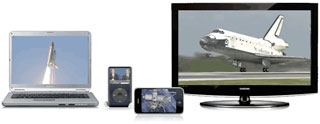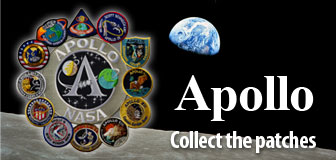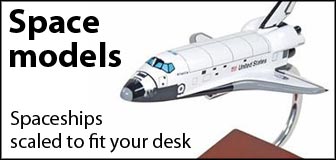PHOTOS: Soyuz blasts off with Gaia star surveyor
BY STEPHEN CLARK
SPACEFLIGHT NOW
Posted: December 20, 2013

The sharp-sighted Gaia observatory, carrying the largest camera ever flown in space, rocketed into a predawn sky from French Guiana on Thursday to survey a billion stars and reveal the structure of the Milky Way in finer detail than any mission before.
The ambitious European project, in the works since the early 1990s, promises to collar countless cosmic wonders, ranging from intrinsically bright distant quasars and exploding stars to comparatively dim alien planets, brown dwarf stars and asteroids closer to home.
Dubbed a "discovery machine" by Gerry Gilmore, one of Gaia's founding fathers from Cambridge University, the mission blasted off at 0912:19 GMT (4:12:19 a.m. EST; 6:12:19 a.m. local time) on a Soyuz rocket from the Guiana Space Center in South America.
The 15-story Russian launcher, modified with digital controls and upgraded range safety systems, tilted east from the European-run space base in French Guiana, quickly becoming a brilliant point of light in the sky over Sinnamary, the nearest town to the launch pad.
As the powerful launcher rose into the first rays of sunlight, its teardrop-shape exhaust plume was illuminated, putting on a spectacular sky show for observers around the tropical space base.
These photos show retraction of the launch pad's 174-foot-tall mobile gantry and liftoff of the Soyuz rocket with Gaia.
See our Mission Status Center for the latest news on the launch.
Credit: CNES/CSG
 Credit: ESA-CNES-Arianespace/Optique video du CSG-JM Guillon
Credit: ESA-CNES-Arianespace/Optique video du CSG-JM Guillon
 Credit: ESA-CNES-Arianespace/Optique video du CSG-JM Guillon
Credit: ESA-CNES-Arianespace/Optique video du CSG-JM Guillon
 Credit: ESA-CNES-Arianespace/Optique video du CSG-JM Guillon
Credit: ESA-CNES-Arianespace/Optique video du CSG-JM Guillon
 Credit: ESA-CNES-Arianespace/Optique video du CSG-JM Guillon
Credit: ESA-CNES-Arianespace/Optique video du CSG-JM Guillon
 Credit: ESA-CNES-Arianespace/Optique video du CSG-JM Guillon
Credit: ESA-CNES-Arianespace/Optique video du CSG-JM Guillon
 Credit: ESA-CNES-Arianespace/Optique video du CSG-JM Guillon
Credit: ESA-CNES-Arianespace/Optique video du CSG-JM Guillon
 Credit: ESA-CNES-Arianespace/Optique video du CSG-JM Guillon
Credit: ESA-CNES-Arianespace/Optique video du CSG-JM Guillon
 Credit: ESA-S. Corvaja
Credit: ESA-S. Corvaja
 Credit: ESA-S. Corvaja
Credit: ESA-S. Corvaja
 Credit: ESA-S. Corvaja
Credit: ESA-S. Corvaja
 Credit: ESA-S. Corvaja
Credit: ESA-S. Corvaja
 Credit: ESA-S. Corvaja
Credit: ESA-S. Corvaja
 Credit: ESA-S. Corvaja
Credit: ESA-S. Corvaja
 Credit: ESA-CNES-Arianespace/Optique video du CSG-JM Guillon
Credit: ESA-CNES-Arianespace/Optique video du CSG-JM Guillon
 Credit: ESA-S. Corvaja
Credit: ESA-S. Corvaja
 Credit: ESA-S. Corvaja
Credit: ESA-S. Corvaja
|


 Credit: ESA-CNES-Arianespace/Optique video du CSG-JM Guillon
Credit: ESA-CNES-Arianespace/Optique video du CSG-JM Guillon Credit: ESA-CNES-Arianespace/Optique video du CSG-JM Guillon
Credit: ESA-CNES-Arianespace/Optique video du CSG-JM Guillon Credit: ESA-CNES-Arianespace/Optique video du CSG-JM Guillon
Credit: ESA-CNES-Arianespace/Optique video du CSG-JM Guillon Credit: ESA-CNES-Arianespace/Optique video du CSG-JM Guillon
Credit: ESA-CNES-Arianespace/Optique video du CSG-JM Guillon Credit: ESA-CNES-Arianespace/Optique video du CSG-JM Guillon
Credit: ESA-CNES-Arianespace/Optique video du CSG-JM Guillon Credit: ESA-CNES-Arianespace/Optique video du CSG-JM Guillon
Credit: ESA-CNES-Arianespace/Optique video du CSG-JM Guillon Credit: ESA-CNES-Arianespace/Optique video du CSG-JM Guillon
Credit: ESA-CNES-Arianespace/Optique video du CSG-JM Guillon Credit: ESA-S. Corvaja
Credit: ESA-S. Corvaja Credit: ESA-S. Corvaja
Credit: ESA-S. Corvaja Credit: ESA-S. Corvaja
Credit: ESA-S. Corvaja Credit: ESA-S. Corvaja
Credit: ESA-S. Corvaja Credit: ESA-S. Corvaja
Credit: ESA-S. Corvaja Credit: ESA-S. Corvaja
Credit: ESA-S. Corvaja Credit: ESA-CNES-Arianespace/Optique video du CSG-JM Guillon
Credit: ESA-CNES-Arianespace/Optique video du CSG-JM Guillon Credit: ESA-S. Corvaja
Credit: ESA-S. Corvaja Credit: ESA-S. Corvaja
Credit: ESA-S. Corvaja
